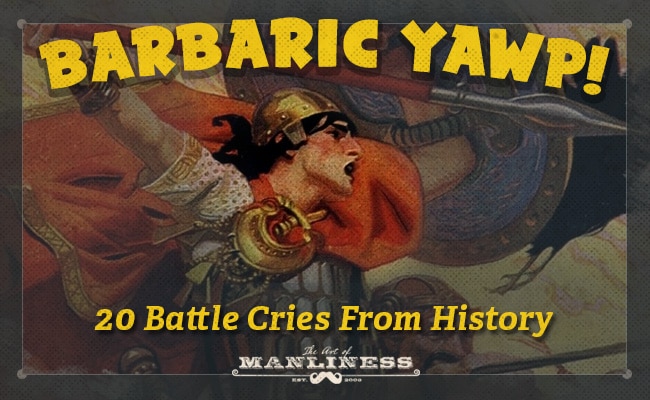
“I too am not a bit tamed—I too am untranslatable;
I sound my barbaric yawp over the roofs of the world.” –Walt Whitman
Throughout cultures and time, shouting and yelling have typically been categorized as masculine acts. It makes sense. Yelling is inherently aggressive and often the prelude to actual physical violence.
Across mammal species, males will frequently engage in posturing that includes roaring, snorting, or screeching. The aim of this pre-fight auditory showdown is actually to avoid having the conflict escalate into a physical altercation. If a male mammal can dominate his opponent into submission with just a roar, he eliminates the risk of getting killed or seriously injured and saves himself precious energy. If the roar doesn’t work to stave off the fight, well, hopefully it was fierce enough to instill some fear into one’s foe, leading him to struggle less fiercely and submit sooner, rather than later.
These roars aren’t limited to the animal kingdom, though. In the great epic poems of cultures in both the East and the West, a manly, fierce yell was a desirable trait for a warrior to have.
In The Iliad, Homer often describes the story’s heroes in terms of their ability to let out a howl that could weaken the knees of their enemies. Diomedes is called “Diomedes of the loud war cry,” and both Menelaus and Odysseus are described as “utter[ing] a piercing shout.”
The mighty warriors that populate the Shahnameh, an epic Persian epic poem from the tenth century, are all described as arming themselves with a virile war cry: Koshan rumbled “in a voice like a drumbeat”; Rahham “roared out and began to boil like the sea”; and the thick-bodied Rostam thundered “like an elephant enraged.”
Cú Chulainn, a hero from Celtic mythology, used the “hero’s scream” to scare off devils and goblins.
The Georgian hero Tariel was able to drop opposing warriors using only the force of his mighty war cry.
And in Welsh mythology, the hero Culhwch was said to be able to give a battle cry so loud and violent that “all the women in the court that [were] pregnant [would] abort” and those women who were not pregnant would become sterile.
Lone heroes weren’t the only ones known to give battle cries, either. Bands of warriors would often cry out in unison to frighten their enemies and fill themselves with thumos.
Even today, soldiers and fighters continue to yell and shout when engaging with the enemy. You even see battle cries on football and rugby fields.
There’s something very visceral about the aggressive shout that taps into the animal within us. As historian Dean Miller notes in his book The Epic Hero, “If the human voice…carries the proof of intelligence and therefore of a living vitality specific to humanity, the warrior’s shout announces a retrograde act, moving back or down into animality or even into the inanimate (a drumbeat, the sound of the sea).”
Moving back into that raw barbarism via a mighty yell may be a way for us humans to tap into our animal strength. In fact, research backs this idea up: one study showed that athletes who scream when exerting themselves show an 11% increase in power output!
The battle cry has truly played an integral and just plain fascinating role in the history of masculinity. So today we highlight 20 famous and not-so-famous battle cries through the ages and around the world. Maybe it’ll inspire you to come up with your own manly shout.
Sound your barbaric yawp!
The Roman Barritus
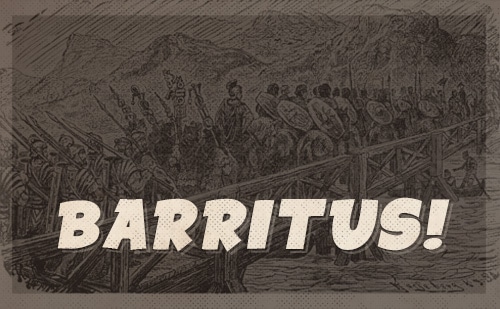
Unlike their Greek forebearers who drilled to music, ancient Roman soldiers typically marched in silence. But once they encountered the enemy, the soldiers would let out a unified war cry to intimidate their foes.
Soldiers in the Late Roman army adopted many customs and habits of the Germanic tribes they fought, including a battle cry they called “barritus.” In his work Germania, the historian Tacitus described this martial growl as marked by a “harsh tone and hoarse murmur.” Soldiers would “put their shields before their mouths, in order to make the voice swell fuller and deeper as it echoes back.” According to Tacitus, the goal of the barritus was to kindle courage in the Roman soldiers’ hearts, while striking fear into those of their enemies.
In the 1964 film The Fall of the Roman Empire, there’s a great scene with a Roman legion bellowing an intimidating barritus:
Oorah!
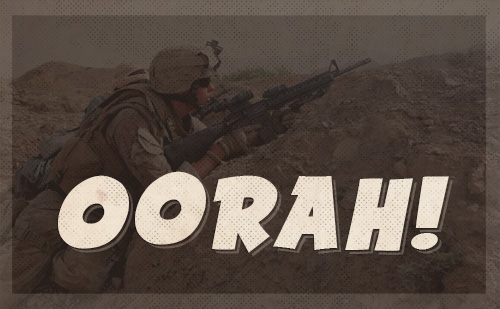
“Oorah!” has been the go-to battle cry for the U.S. Marine Corps since about the Vietnam War. It’s not only used as a battle cry, but also as a way for Marines to greet their fellow leathernecks.
The exact origins of “Oorah!” are hard to pin down. Several possible sources exist. One story has it introduced by the 1st Amphibious Reconnaissance Company in 1953; a drill instructor is said to have incorporated the simulated sound of a submarine dive horn — “Ahuga!” — into a marching cadence. It caught on and other drill instructors used “Ahuga!” as well. Over time it morphed into “Oorah!”
Another likely source of this spirited shout is that it’s simply a derivation of “Hurrah!” — which was in common use by both American and British soldiers centuries before “Oorah!” came on the scene.
Rebel Yell
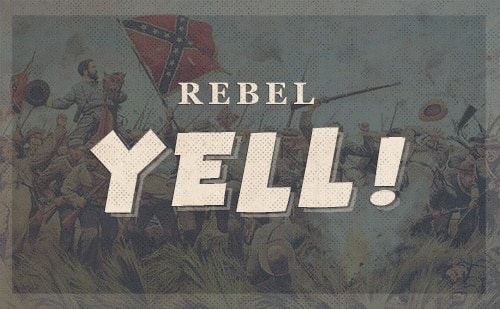
Confederate soldiers in the American Civil War developed a uniquely terrifying battle cry to intimidate their enemy and boost their own morale. Called the Rebel Yell, one Union soldier said it would send “a peculiar corkscrew sensation that went up your spine when you heard it” and that “if you claim you heard it and weren’t scared that means you never heard it.”
The Rebel Yell has been described as sounding like a “rabbit’s scream” or “an Indian war cry.” The latter description is probably apt, as many historians believe Southerners were inspired in creating the Rebel Yell by American Indian battle cries they had heard before the war.
While there is no recording of the Rebel Yell in an actual battle, the Library of Congress did record a group of Confederate veterans giving the Rebel Yell in 1930. Take a listen:
Uukhai!
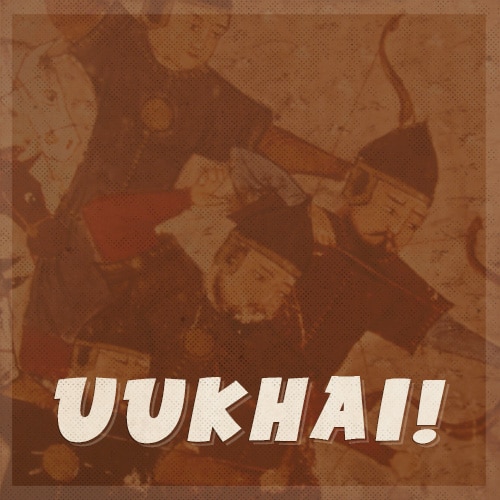
The Mongols of the 13th century were reported to have yelled “Uukhai!” as they went into battle. The translation is something like our modern “Hurray!” — but had a more sacred bent and was used like the Christian “Amen.” After petitioning the sky for aid, Mongols would hold both hands out with palms up and move them in a clockwise circle three times saying “hurray, hurray, hurray.” Such prayers were used in official settings and rituals, to scare away evil spirits, and to shore up both supernatural assistance and the warriors’ morale preceding battle. Modern Mongolian archers shout the phrase and raise their hands to the heavens whenever they score a point in competition.
Scottish Clan Slogans
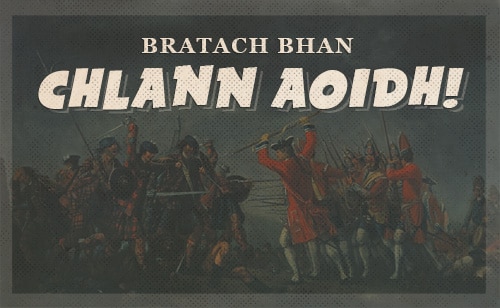
Scottish clans were very similar to Greek city-states in the fluidity of their relationships. Clans often fought each other, but sometimes banded together to fight a common foe, usually the English.
Each clan had their own distinct battle cry, called a slogan in the Lowlands and a flughorn in the Highlands. According to 19th century historian Rev. George Hill, Highland clans typically chose the name of a place or event that had historical significance for the respective clan. Crying out the name seemed to “operate like a charm” on the soldiers, filling them with thumos to fight for their homeland and ancestors.
Scottish slogans also served as a watchword to help identify fellow clansmen in the confusion of battle.
The Mackay slogan (the clan that I descended from) is “Bratach Bhan Chlann Aoidh,” meaning “The White Banner of Mackay.” It’s in reference to the white battle flag that Ian Aberach carried when he led the Mackays at the Battle of DrumnaCoub in 1433.
And sorry to burst your bubble, but Scottish hero William Wallace didn’t yell “Freeeeeeedommmmm!” before being executed. Thanks Mel Gibson.
Deus Vult!
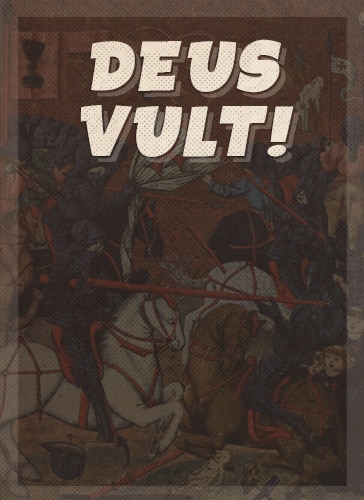
During the First Crusade, Christian soldiers would shout “Deus Vult!” — “God Wills It!” — as they fought Muslims for control of the Holy Land.
Urrah!

For over 300 years, Russian soldiers have shouted “Urrah!” in battle. Records suggest that soldiers in the Russian Imperial Army were the first to use it. Some historians believe it was inspired by the battle cry “Vur Ha!” used by soldiers in the Ottoman Empire, while others think it was inspired by the Mongolian “hurray!”
“Urrah!” was widely used by soldiers in the Red Army during WWII. It’s still used by the Russian army today, but primarily in military parades and Victory Day celebrations like this one:
Alala!
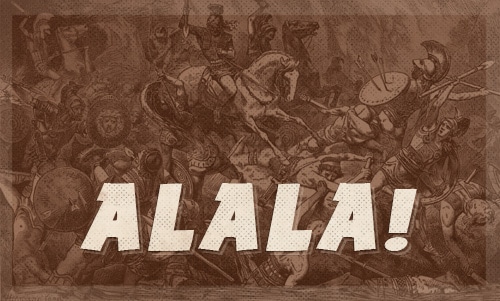
Before a battle, the Ancient Greeks would ask for the blessings of Alala — the goddess of the war cry — by shouting out her name as loudly and fiercely as possible. Greek hoplites hoped that Alala would answer their supplication by amplifying their cry and thus scaring the living daylights out of their enemies.
Banzai!
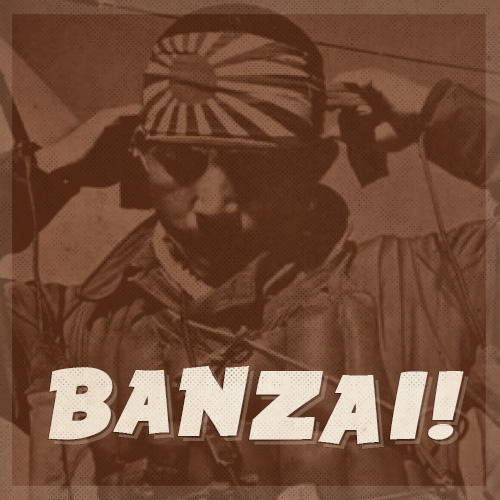
To encourage Japanese soldiers to fight to the death rather than surrender to the enemy, the Japanese government romanticized suicide attacks by harkening to the ancient honor code of the samurai — the Bushido. Samurai warriors believed it was better to choose death over the humiliation of defeat.
Japanese infantrymen were thus trained to make a last-ditch suicide attack when they were all but beaten. As they ran towards enemy fire, they’d scream “Tenno Heika Banzai!” — “Long live the Emperor!” Kamikaze pilots were said to have yelled the same thing as they flew their planes into enemy warships. The battle cry was often shortened to just “Banzai!” Because the battle cry was shouted in conjunction with these suicidal barrages, Allied forces began calling this quintessentially Japanese battle strategy “Banzai attacks.”
Hokahey!
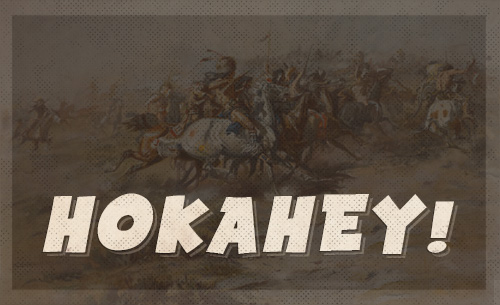
American Indian warriors were adept practitioners of the war cry (and no, they didn’t “Whoo! Whoo!” by patting their mouth with their hand). Each tribe had a distinct battle shout. Sometimes they’d yell words that referenced tribe principles. But like most cries men give during battle, an Indian warrior would often just holler and wail as fiercely as he could to intimidate his enemy.
Perhaps the most famous Indian battle cry comes from the Lakota Sioux. During the Great Sioux War of 1876-1877, Lakota war chief Crazy Horse is said to have exhorted his warriors to fight the U.S. Army by exclaiming “Hokahey! Today is a good day to die!”
Many people wrongly translate “Hokahey!” to mean “Today is a good day to die” simply because Crazy Horse said the phrase after shouting “Hokahey!” According to the website Native Languages, however, “Hokahey!” is a Sioux exclamation that translates roughly to “Let’s do it!” or “Let’s roll!” So what Crazy Horse actually said was “Let’s roll, men! Today is a good day to die!”
That’s a pretty badass battle cry.
Ei! Ei!…Oh!
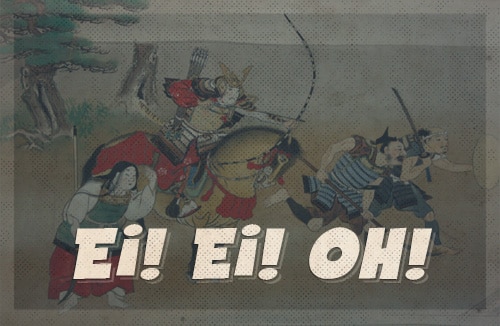
The samurai were an elite warrior and political class that dominated Japan for hundreds of years. Right before a battle, the daimyo, or warlord, would raise his signaling flag and shout “Ei! Ei!” to which the samurai would respond with “Oh!” Then all hell would be unleashed on the enemy.
Usuthu!
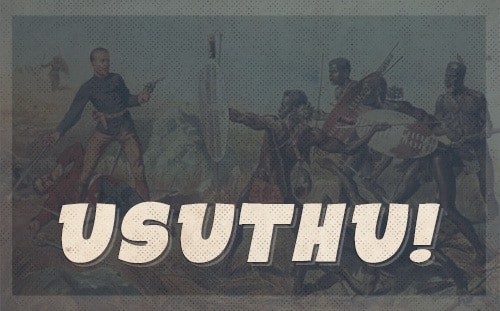
In 1879, the British army fought the Zulus in what is now South Africa. Using nothing but spears and long shields made of cowhide, Zulu warriors were able to repulse the first invasion of the heavily armed British troops. The Usuthu were a faction in the Zulu Kingdom, and they took their name from a type of cattle their warrior ancestors used to pillage during wars. To keep alive their memory, and perhaps to summon the power of their brave forebearers, these men would shout out “Usuthu!” during battle. Other factions within the kingdom used this battle cry as well during the Anglo-Zulu War.
Odin Owns You All!
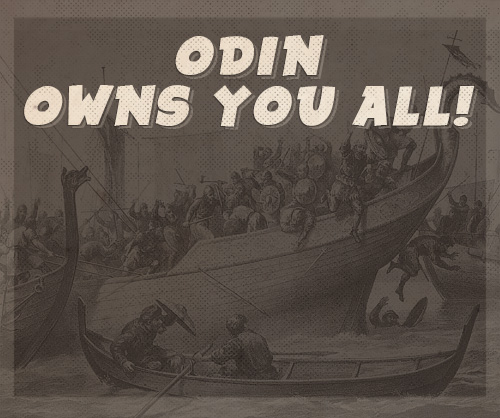
Before battle, the Vikings would often invoke their warrior gods to give them the strength and power to defeat their enemies. In fact, Odin, the Norse god of wisdom, inspired one of their commonly used battle cries. According to Norse mythology, in the very first war in the world, Odin flung a spear over the entire host gathered for battle. Viking kings and commanders would thus emulate the Allfather by having one warrior throw a spear over their enemies’ heads, while the rest of the troops yelled: “Odin owns you all!” (A thousand years later, Viking metal band Einherjer would use this battle cry for the title of their 1998 album, Odin Owns Ye All. The spirit of Odin lives on.)
Another common Viking battle cry was simply yelling out “Tyr!” — the name of the god of war.
Hakkaa Päälle!
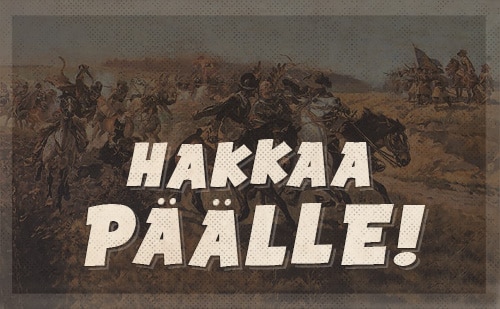
During battle, the Finnish light cavalrymen would cry out “Hakkaa päälle!” meaning, “Cut them down!” right before they would ride roughshod over their enemy with gleaming swords drawn.
Because of their famous battle cry, these cavalrymen became known as the Hakkapeliitta.
The Sword of the Lord and of Gideon!
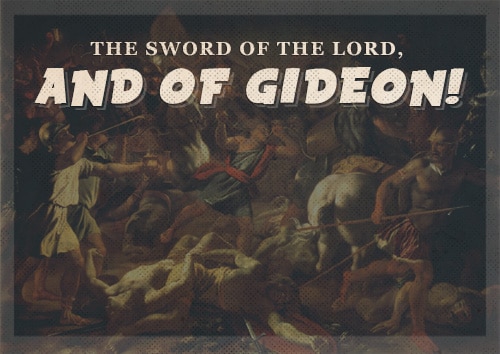
The Bible mentions several war cries, with perhaps the most famous example being found in the 7th chapter of the Book of Judges. Gideon (whose name means “Destroyer” or “Mighty Warrior”) was called by Yahweh to free the people of Israel from the Midianites. By God’s command, Gideon took with him just 300 men whom he chose using a simple test: when the troops stopped to drink from a river, he watched to see who stuck their faces in the water and drank directly from the river (taking their eyes off what was going on around them), and who drank by cupping the water with their hand and lifting it to their mouths (leaving their eyes free to scan the environment). He picked the latter to be his warriors. This doesn’t have anything to do with their battle cry, but it’s an awesome example of situational awareness!
Anyway, when night fell, Gideon led his 300 men into the Midianite camp carrying horns and torches concealed in a clay jar (these were basically Molotov cocktails). At his command, the men blew their horns, threw down their torches, and shouted “The sword of the Lord and of Gideon!”
Bole So Nihal!…Sat Sri Akal!
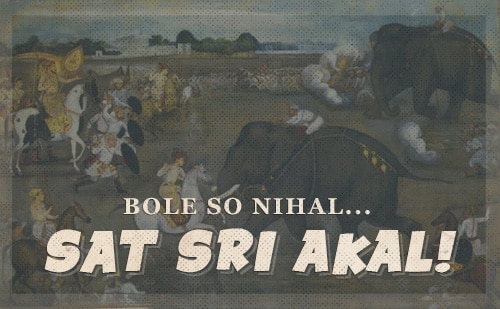
“Bole So Nihal!…Sat Sri Akal!” is a Sikh slogan, or jaikara (literally shout of victory, triumph, or exultation) popularized by Guru Gobind Singh, the last of the 10 Sikh Gurus. It’s used to express joy and is often used in Sikh liturgy. It was also employed by Sikh warriors as a battle cry.
The jaikara is a two-part, call-and-response cry. One man yells “Bole So Nihal!” — “Whoever utters [the phrase following] shall be happy, shall be fulfilled.” The army would yell in response “Sat Sri Akal!” — “Eternal is the Holy/Great Timeless Lord!”
Allahu Akbar!
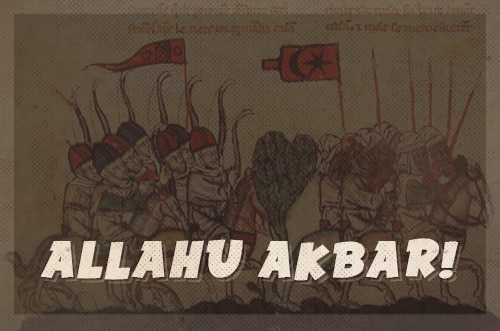
While the Takbir — the term used for the Arabic phase “Allahu Akbar!” (“God is great!”) — is used by Muslims in a variety of settings including births, deaths, and celebrations, it’s traditionally used as a battle cry. It’s said that the Prophet Muhammad first used the Takbir as a war cry in the Battle of Badr. It was subsequently shouted by Muslim soldiers during the Crusades. Today, of course, the phrase has become infamous in the West for its use in terrorist attacks.
Jaya Mahakali, Ayo Gorkhali!
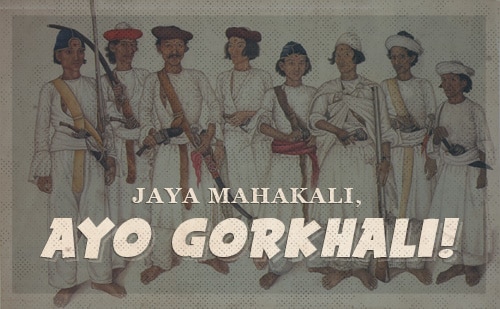
The Gurkha are an elite unit of soldiers from Nepal that have a global reputation for courage and fighting prowess. Stories of a single modern Gurkha warrior stopping a robbery and saving a girl from rape by taking on 40 thieves at the same time have buttressed this reputation; their use of the traditional, badass khukuri knife hasn’t hurt it either.
Going into battle the Gurkhas will yell in unison: “Jaya Mahakali, Ayo Gorkhali!” — “Glory to Great Kali, the Gorkhas approach!”
Currahee!
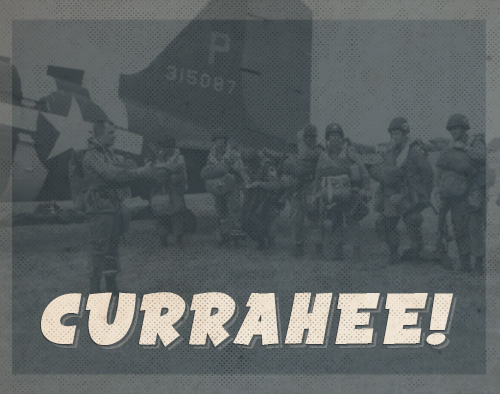
Leading up to their historic D-Day parachute jump into France, the men of the 101st Airborne Division were whipped into tip-top shape at Camp Toccoa in Georgia. Dominating the camp was 1,740 foot Mount Currahee — a Cherokee word that means “stands alone.” Part of the paratroopers’ conditioning included hikes and runs up and down its slopes. The experience, though exhausting, bonded the men together, and the mountain quickly gained a legendary status amongst the soldiers.
When the men started making practice parachute drops, they would yell “Geronimo!” as they jumped from the plane. There are several explanations as to the origins of this cry — it may have come from a movie or a song from that time that bore the name.
Colonel Robert Sink, commander of the 506th Parachute Infantry Regiment (within which served Easy Company, aka the Band of Brothers), wanted his unit to stand out from the others in the 101st Division. So instead of shouting “Geronimo!’ as they jumped, he had his paratroopers yell “Currahee!” in homage to the mountain that had helped turn them into men.
Desperta Ferro!
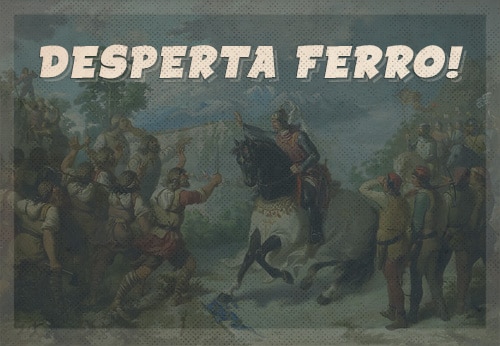
The Almogavars were soldiers from Christian Iberia (what is now Spain and Portugal) who fought the Muslims during the Reconquista.
Before and during battle, the Almogavars would shout “Desperta Ferro!” — meaning “Awaken Iron!” — while striking their swords and lances on stones to create a cascade of sparks.
The evocative and virile phrase “Awaken Iron!” coupled with the sword-sparking ritual, makes this my favorite battle cry on the list.


